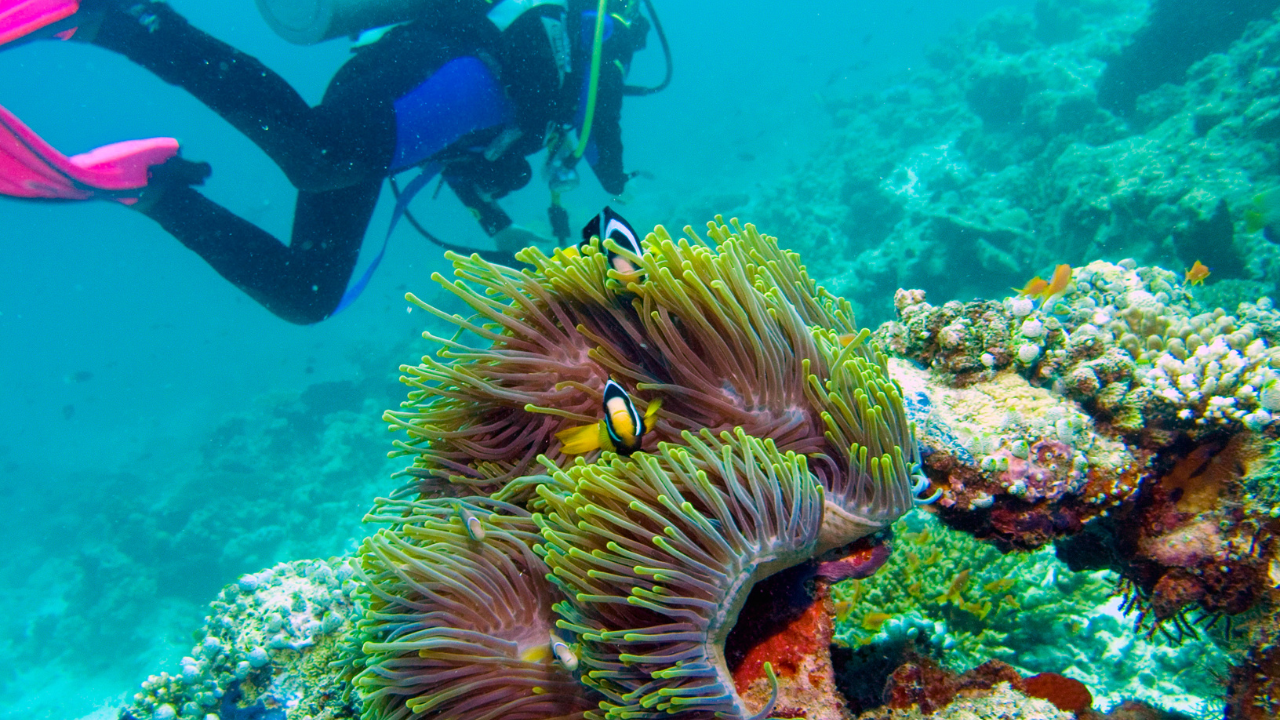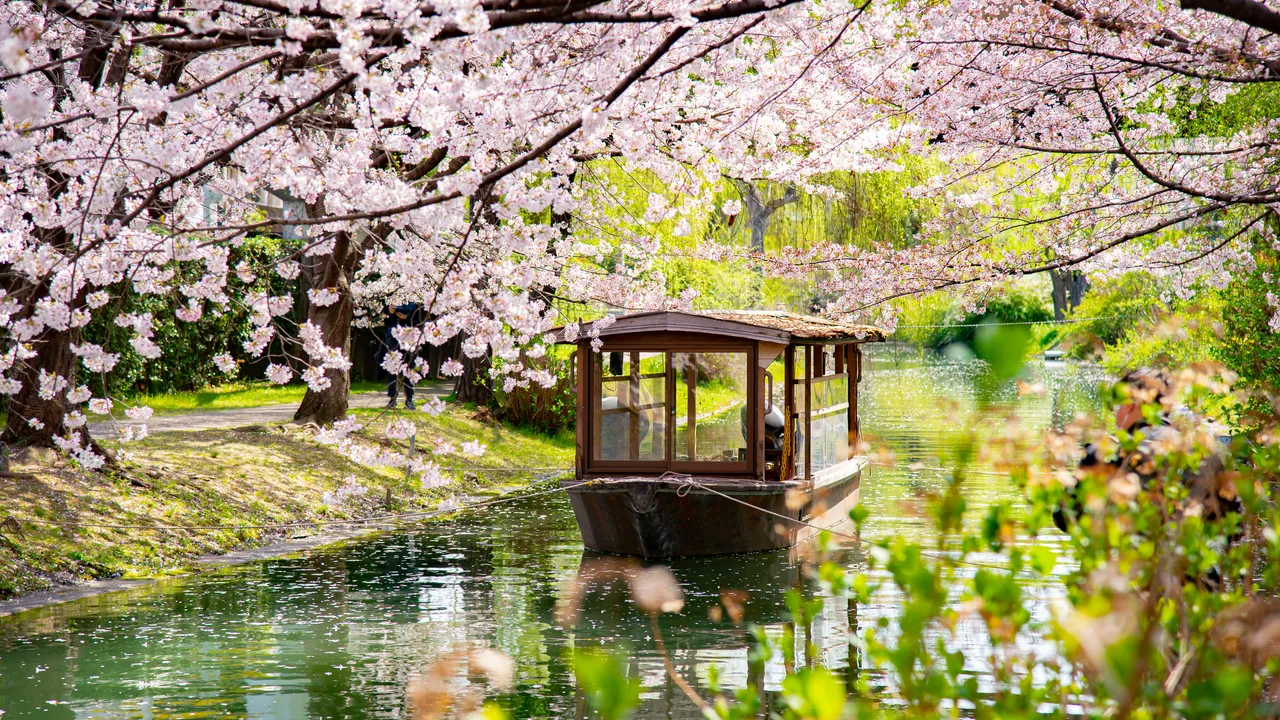Why Explore the Great Barrier Reef?
The Great Barrier Reef is a global icon, visible from space and home to one of the planet’s most biodiverse ecosystems. It contributes AUD 6.4 billion annually to Australia’s economy through tourism, supporting over 64,000 jobs. Beyond its ecological and economic significance, the reef offers unparalleled experiences—whether you’re swimming with manta rays, exploring coral gardens, or learning about Indigenous connections to the sea.
However, climate change, coral bleaching, and coastal development threaten this delicate ecosystem, making sustainable tourism more critical than ever. Visiting responsibly allows you to witness the reef’s splendor while supporting conservation efforts. Here are eight must-do activities to immerse yourself in the Great Barrier Reef’s beauty.
1. Snorkel the Outer Reef from Cairns
Cairns, the gateway to the Great Barrier Reef, is the perfect base for snorkeling the Outer Reef, where vibrant corals and diverse marine life thrive. Day trips from Cairns visit iconic sites like Flynn, Thetford, or Milln Reefs, known for their clear waters and abundant fish, including clownfish, parrotfish, and barracuda.
- What to Expect: A typical day trip (6–8 hours, AUD 200–300) includes a boat ride (1–2 hours), guided snorkeling, and lunch. Operators like Reef Magic or Tusa Dive provide gear, safety briefings, and marine biologist-led tours. Expect to see hard and soft corals, sea turtles, and possibly reef sharks.
- Tips: Book with eco-certified operators (e.g., those with Advanced Ecotourism Certification) to support sustainability. March–May and September–November offer warm weather (25–30°C) and calm seas. Apply reef-safe sunscreen to protect corals.
- Why It’s Special: Snorkeling the Outer Reef offers an accessible, immersive introduction to the reef’s biodiversity, perfect for beginners and families.
Pro Tip: Opt for a pontoon-based tour (e.g., Reef Magic’s Marine World) for amenities like underwater observatories and shaded rest areas.
2. Scuba Dive at Agincourt Reef
For certified divers or adventurous beginners, scuba diving at Agincourt Reef, near Port Douglas, is a must. This ribbon reef system boasts pristine coral walls, swim-throughs, and encounters with giant clams, moray eels, and humphead wrasse. It’s one of the reef’s most biodiverse areas, ideal for underwater photography.
- What to Expect: Day dives (AUD 250–400) include 2–3 dives, equipment, and meals. Operators like Poseidon Outer Reef Cruises offer introductory dives for non-certified divers (minimum age 12). Multi-day liveaboard trips (3–7 days, AUD 1,000–3,000) with Spirit of Freedom explore remote sites like Cod Hole.
- Tips: A dive medical certificate may be required (check Australia’s dive regulations). Book in advance for liveaboards, especially during peak seasons (June–August, December–January). Visibility is best in September–November (up to 30m).
- Why It’s Special: Diving Agincourt Reef reveals the reef’s hidden depths, where vibrant corals and large pelagics create an unforgettable underwater world.
Pro Tip: Complete an Open Water Diver course in Cairns (AUD 500–700, 3–4 days) to dive independently and save on future trips.
3. Sail the Whitsunday Islands
The Whitsunday Islands, a cluster of 74 idyllic isles within the Great Barrier Reef Marine Park, offer a sailing adventure through turquoise waters and coral-fringed beaches. Airlie Beach is the launchpad for exploring iconic spots like Whitehaven Beach and Heart Reef, a natural heart-shaped coral formation.
- What to Expect: Day sails (AUD 150–250) with Sailing Whitsundays visit Hill Inlet’s swirling sands and snorkeling sites. Overnight trips (2–3 days, AUD 500–800) on catamarans or yachts include meals, snorkeling, and stargazing. Expect to see dolphins and humpback whales (June–September).
- Tips: Book eco-friendly operators like EcoSail to minimize environmental impact. Pack light (soft bags only) and bring a hat for sun protection. March–May offers fewer crowds and pleasant weather.
- Why It’s Special: Sailing the Whitsundays combines relaxation with adventure, showcasing the reef’s islands and marine life in a serene setting.
Pro Tip: Take a scenic flight over Heart Reef (AUD 200–300, 1 hour) for a breathtaking aerial perspective.
4. Visit Fitzroy Island for a Day Trip
Fitzroy Island, a 45-minute ferry ride from Cairns, is a coral cay surrounded by fringing reefs, ideal for families and budget travelers. Its lush rainforest, white-sand beaches, and shallow snorkeling spots make it a microcosm of the Great Barrier Reef’s beauty.
- What to Expect: Day trips (AUD 90–150) include ferry transfers and optional activities like glass-bottom boat tours or kayaking. Snorkel directly from Nudey Beach to see green sea turtles and coral gardens. Hiking trails lead to the island’s summit for panoramic views.
- Tips: Ferries depart Cairns at 8 AM; book via Fitzroy Island Adventures. Bring your own snorkel gear to save on rentals (AUD 20). Avoid peak holiday periods (December–January) for a quieter experience.
- Why It’s Special: Fitzroy Island offers an affordable, all-in-one reef experience with easy access and diverse activities.
Pro Tip: Pack a picnic or dine at Foxy’s Bar for casual beachfront meals like fish and chips.
5. Join a Citizen Science Reef Tour
For eco-conscious travelers, joining a citizen science tour with organizations like Reef Check Australia or Passions of Paradise lets you contribute to the reef’s conservation. These tours combine snorkeling or diving with data collection on coral health, fish populations, and bleaching impacts.
- What to Expect: Tours (AUD 200–350) include training to identify marine species and record observations. You’ll visit sites like Michaelmas Cay, a seabird sanctuary, and collect data used by researchers. No prior experience is needed, and participants receive a certificate.
- Tips: Book at least a month in advance, as spots are limited. Wear a full-body stinger suit (provided) for sun and jellyfish protection (November–May). September–November offers optimal conditions.
- Why It’s Special: Citizen science tours empower you to protect the reef while learning about its ecology, blending adventure with purpose.
Pro Tip: Share your experience on social media with hashtags like #ReefCitizenScience to raise awareness about conservation.
6. Explore the Reef’s Indigenous Heritage
The Great Barrier Reef is part of the traditional sea country of over 70 Aboriginal and Torres Strait Islander groups, including the Kuku Yalanji and Yidinji peoples. Cultural tours offer insights into their 60,000-year connection to the reef through storytelling, art, and guided walks.
- What to Expect: Tours like Dreamtime Dive & Snorkel (AUD 200–250) from Cairns combine snorkeling with Indigenous guides sharing Dreamtime stories and bush tucker knowledge. In Port Douglas, Walkabout Cultural Adventures (AUD 150–200) explore coastal sites and reef-related traditions.
- Tips: Book with Indigenous-owned operators for authenticity. Respect cultural protocols, such as not touching sacred sites. April–October is ideal for outdoor activities.
- Why It’s Special: These tours deepen your understanding of the reef’s cultural significance, honoring its First Nations custodians.
Pro Tip: Visit the Cairns Indigenous Art Fair (July) for reef-inspired artworks and cultural performances.
7. Swim with Marine Giants on a Whale or Manta Ray Tour
The Great Barrier Reef is a haven for megafauna, including humpback whales (June–September) and manta rays (year-round). Specialized tours from Cairns, Port Douglas, or Townsville offer chances to swim with these gentle giants in their natural habitat.
- What to Expect: Whale-watching tours (AUD 150–250) with Ocean Safari visit the Coral Sea, where humpbacks breach and calf. Manta ray snorkel trips (AUD 200–300) to sites like Ribbon Reefs allow close encounters with rays spanning up to 7 meters. Tours include expert guides and safety briefings.
- Tips: Book with operators following the Australian National Guidelines for Whale Watching. June–August is peak whale season; September–November is best for manta rays. No diving experience is required.
- Why It’s Special: Swimming with whales or manta rays is a humbling, once-in-a-lifetime experience, showcasing the reef’s largest inhabitants.
Pro Tip: Capture underwater footage with a rented GoPro (AUD 50/day) for lasting memories.
8. Stay on a Reef Island Resort
For a luxurious or immersive experience, stay at a reef island resort like Green Island, Heron Island, or Lady Elliot Island. These eco-friendly retreats offer direct reef access, guided tours, and sustainable accommodations, from glamping to 5-star villas.
- What to Expect: Green Island (AUD 150–500/night) is family-friendly with snorkeling and glass-bottom boats. Heron Island (AUD 300–800/night) is a diver’s paradise with turtle nesting (November–March). Lady Elliot (AUD 200–600/night) is carbon-neutral, offering manta ray dives. Packages include meals and activities.
- Tips: Book 3–6 months ahead for peak seasons (December–February, June–August). Ferries or seaplanes from Cairns or Gladstone cost AUD 100–400. Pack reef-safe toiletries to protect the ecosystem.
- Why It’s Special: Island resorts provide an intimate, multi-day reef experience, blending adventure with relaxation.
Pro Tip: Choose Lady Elliot for its eco-credentials, including solar power and coral restoration programs.
Practical Tips for Exploring the Great Barrier Reef
To ensure a seamless and responsible visit, consider these tips:
- How to Reach: Fly to Cairns, Townsville, or Hamilton Island via Sydney, Brisbane, or Melbourne. Domestic flights cost AUD 100–300. From Cairns, ferries or tour boats reach the reef (30–90 minutes). Airlie Beach is a 9-hour drive from Cairns for Whitsunday access.
- Best Time to Visit: March–May and September–November offer warm weather (25–30°C), calm seas, and high visibility. June–August is cooler but busier; December–February brings rain but fewer crowds.
- Costs: Day tours range from AUD 90–400; liveaboards or resorts cost AUD 1,000–3,000. Budget AUD 50–100/day for meals and rentals. No park entry fees are required, but tours include marine park levies (AUD 7/person).
- What to Pack: Swimsuit, rash vest, reef-safe sunscreen (e.g., SunButter), hat, reusable water bottle, and waterproof bag. Rent snorkel/dive gear to save space (AUD 20–50/day).
- Sustainable Practices: Choose eco-certified operators, avoid touching corals, and dispose of waste properly. Support reef restoration by donating to organizations like the Great Barrier Reef Foundation.
- Safety: Follow operator instructions, stay hydrated, and use stinger suits in jellyfish season (November–May). Check Australia’s travel advisories for updates.
- Connectivity: Buy a Telstra or Optus SIM (AUD 20–50 for 10GB) at airports. Wi-Fi is available in Cairns and resorts but limited on boats.
Savoring Queensland’s Coastal Culture
Enhance your reef adventure with Queensland’s vibrant culture and cuisine:
- Cuisine: Try barramundi fish, Moreton Bay bugs (lobster), or tropical fruit platters at Cairns’ Dundee’s Restaurant or Airlie Beach’s Fish D’Vine. Pair with a local Great Barrier Reef gin.
- Festivals: Visit the Cairns Indigenous Art Fair (July) or Port Douglas’ Carnivale (May) for reef-inspired art and music.
- Cultural Immersion: Explore Cairns’ Tjapukai Aboriginal Cultural Park (AUD 60) for dance performances and boomerang workshops.
Pro Tip: Dine at a Cairns night market for affordable seafood and multicultural flavors.
Why the Great Barrier Reef Stands Out
The Great Barrier Reef’s scale, biodiversity, and cultural significance make it a global treasure. Its coral gardens rival tropical rainforests in complexity, while its Indigenous heritage adds depth. Despite challenges like bleaching (notably in 2016 and 2022), the reef remains resilient, with conservation efforts like coral planting and citizen science fostering hope. As one traveler shared, “The reef is a living masterpiece—every snorkel feels like entering another world.”
Some note crowded boats or high costs, but choosing smaller operators or off-peak seasons mitigates these. Eco-friendly tours and island stays ensure a meaningful, low-impact visit.
Conclusion: Dive into the Reef’s Magic
The Great Barrier Reef is more than a destination—it’s a journey into nature’s grandeur. From snorkeling vibrant corals to sailing the Whitsundays, the eight activities above capture the reef’s essence. Whether you’re diving with manta rays, learning Indigenous stories, or relaxing on a coral cay, the reef invites you to explore responsibly and leave inspired.
Plan your adventure to this underwater wonderland and support its preservation for future generations. Have you explored the Great Barrier Reef or dream of diving in? Share your stories in the comments below, and let’s inspire more travelers to discover Australia’s marine jewel!





Leave a Reply